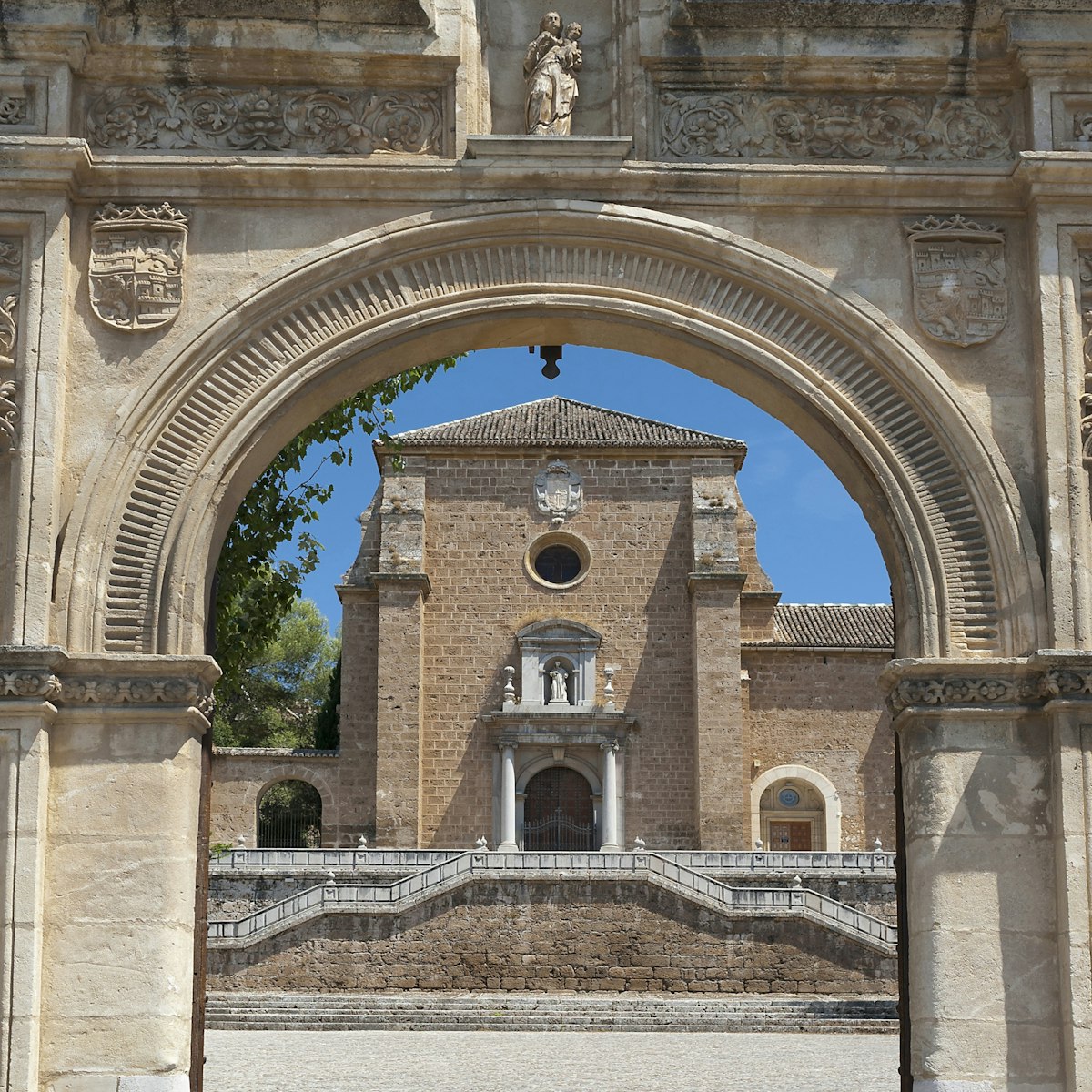This huge Renaissance palace clashes spectacularly with the style of its surroundings on the Alhambra. Its main (western) facade features three porticoes divided by pairs of fluted columns, with bas-relief battle carvings at their feet. The building is square but contains a two-tiered circular courtyard with 32 columns. This circle inside a square is the only Spanish example of a Renaissance ground plan symbolising the unity of earth and heaven.
The palace, begun in 1527 by Pedro Machuca, an architect from Toledo who studied under Michelangelo, was financed by taxes on Granada's morisco (converted Muslim) population. However, funds dried up when the moriscos rebelled in 1568, and the palace remained roofless until the early 20th century.
Inside are two museums: the ground-floor Museo de la Alhambra and, upstairs, the Museo de Bellas Artes (Fine Arts Museum).
Access to the Palacio de Carlos V is free via the Puerta de la Justicia on the southern side of the Alhambra.








